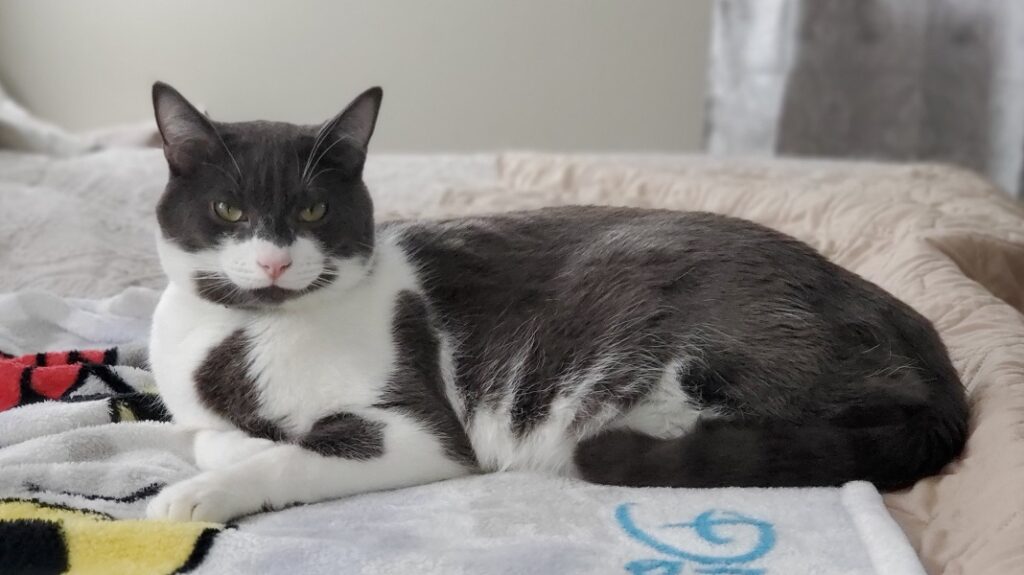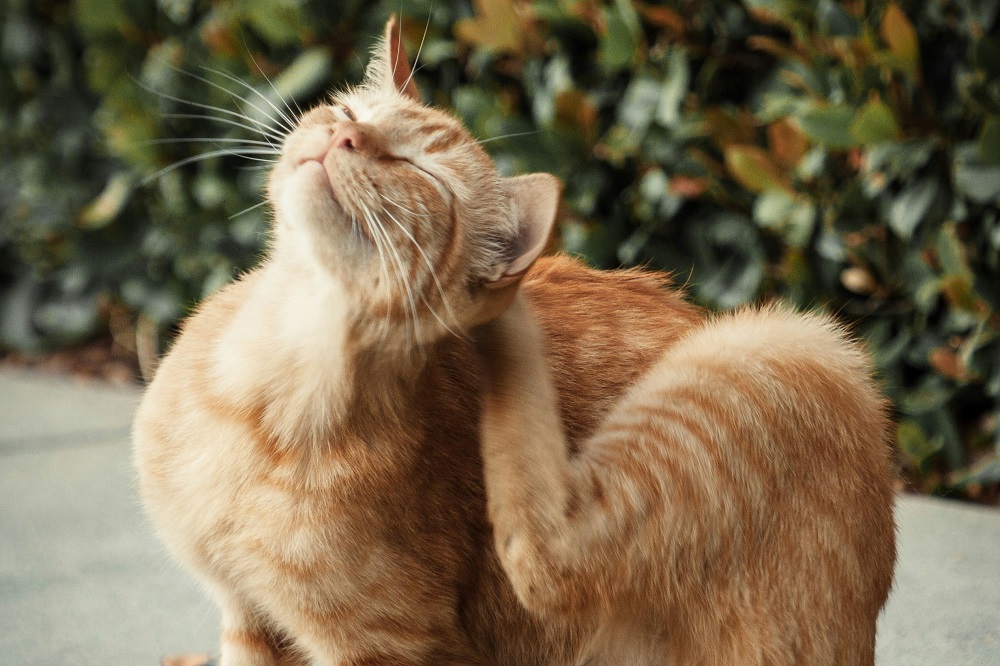Your cat is sleek, majestic, and incredibly good at ignoring you. Until you spot something strange in their fur. Flaky, white specks? A dusty trail on your black hoodie after a cuddle session? Yep, your cat has dandruff.
It’s not just a cosmetic issue. While a few flakes here and there might be no big deal, cat dandruff can sometimes be a sign of something more going on underneath the surface. Let’s take a look at what causes it, what it might mean, and how you can help your flaky feline feel better fast.
What Exactly Is Cat Dandruff?
Cat dandruff is made up of dead skin cells that flake off and become visible in your cat’s fur, usually on the back, around the base of the tail, or on the sides.
A few flakes now and then are pretty normal. Cats shed skin cells just like we do. But when the flakes become frequent, thick, or combined with other symptoms, it’s worth paying attention.
Cat dandruff is different from dander, which is a microscopic substance made up of proteins found in saliva, skin, and urine. Dander is what triggers allergies in people, while dandruff is more about your cat’s skin health.
What Causes Dandruff in Cats?
Dandruff can be caused by a number of things, ranging from minor annoyances to underlying health conditions. Here are some of the most common reasons your cat might be shedding more than their usual sass.
Dry Air
Just like people, cats can develop dry skin in the winter when indoor heating sucks the moisture out of the air. Dry skin leads to flaky skin, and flaky skin means dandruff.
Poor Grooming Habits
Healthy cats are expert groomers, but if your cat is overweight, older, or arthritic, they may not be able to reach certain parts of their body. This lack of grooming can lead to a buildup of dead skin cells and oils.
Dehydration
If your cat isn’t drinking enough water, their skin may dry out. Dehydration can be subtle, especially in cats who prefer running faucets over water bowls.
Poor Diet
Skin health starts on the inside. A diet lacking in omega-3 fatty acids or other essential nutrients can lead to dry, flaky skin. Low-quality food may not give your cat everything they need for a healthy coat.
Allergies
Cats can be allergic to all kinds of things, including food, dust mites, pollen, or even grooming products. Allergies can cause inflammation, itching, and, you guessed it, dandruff.
Parasites or Skin Conditions
Mites, fleas, and fungal infections like ringworm can all lead to flaky, irritated skin. These conditions often come with redness, hair loss, or scabbing, so be sure to check your cat’s skin closely.
Underlying Health Issues
Certain medical conditions like diabetes, hyperthyroidism, or seborrhea can manifest with skin problems. If dandruff appears suddenly or gets worse quickly, a vet visit is your safest bet.
Is Cat Dandruff Dangerous?
Most of the time, cat dandruff is not dangerous on its own. It’s more of a clue that something in your cat’s environment, routine, or health may need attention.
If your cat is acting normal, eating well, and grooming as usual, mild dandruff probably isn’t an emergency. But if it’s accompanied by other signs like itching, excessive grooming, hair loss, lethargy, or changes in behavior, it’s time to dig deeper.
Cats are great at hiding discomfort, so skin symptoms might be one of the first signs that something’s wrong.
What You Can Do About It
If your cat is flaking more than usual, there are a few things you can do to help soothe their skin and improve their coat.
Brush Regularly
Brushing helps remove dead skin cells, distributes natural oils, and stimulates healthy skin. It’s also a great way to check for scabs, parasites, or other skin changes.
Use a brush that’s gentle and suited for your cat’s coat type. Even short-haired cats benefit from regular grooming.

Look, I don’t do dandruff. My fur is a luxurious, snowflake-free zone, thank you very much. If you see flakes on the couch, that’s probably just from your scalp stress. I keep my grooming routine tighter than your morning latte schedule. Hydrated, omega-rich, and fabulous. Just like a supermodel with claws. #FlakeFreeFeline #SexyKitty #YouAreTheFlakyOne
Joey
Add A Humidifier
Dry winter air is a common culprit, and adding moisture back into your home environment can make a big difference. A humidifier helps both you and your cat breathe easier and stay hydrated, inside and out.
Improve Their Diet
Look for high-quality food that includes omega-3 fatty acids, especially from fish oils. These help nourish your cat’s skin from within and can reduce flakiness over time.
You can also talk to your vet about safe supplements if your cat needs an extra boost.
Encourage Water Intake
Make sure your cat always has access to fresh water. Some cats drink more when they have a cat water fountain, which mimics running water and encourages hydration.
Wet food can also help increase their water intake if they’re not drinking much from a bowl.
Check for Allergens
If you recently changed cleaning products, litter, or food, try switching back to something your cat tolerated well. New scents or ingredients could be triggering a reaction.
Always look for unscented and cat-safe products when it comes to litter, shampoos, and sprays.
When to See a Vet
If your cat’s dandruff is persistent, getting worse, or paired with other symptoms like itching, sores, or behavior changes, don’t wait it out. Your vet can help identify underlying causes like parasites, infections, or health conditions that need treatment.
It’s especially important to see a vet if:
- Your cat has scabs or open wounds
- There’s sudden hair loss or bald patches
- They seem more tired or less interested in grooming
- The flakes are oily, thick, or spreading quickly
Your cat’s skin is a reflection of their overall health. When something’s off, it often shows up in their coat first.
Final Thoughts
A little dandruff doesn’t mean your cat is falling apart, but it is worth paying attention to. Whether it’s dry air, diet, or something more serious, your cat’s skin is trying to tell you something.
With a few adjustments, and maybe a trip to the vet if things don’t improve, you can help your cat go from flaky to fabulous. After all, their fur should be soft, shiny, and nap-ready, not snowing on your sofa.
Sources:
– Dandruff in Cats | VCA Hospitals https://vcahospitals.com/know-your-pet/dandruff-in-cats
– Why Does My Cat Have Dandruff? | PetMD https://www.petmd.com/cat/general-health/why-does-my-cat-have-dandruff
– Cat Skin Conditions | Cornell Feline Health Center https://www.vet.cornell.edu/departments-centers-and-institutes/cornell-feline-health-center/health-information/feline-health-topics/skin-conditions
– Skin Health in Cats | ASPCA https://www.aspca.org/pet-care/cat-care/common-cat-behavior-issues/cat-skin-health
Recent Posts
Your Cat Might Be a Furry Little Healer… or at Least a Fuzzy Alarm System If you’ve ever had your cat suddenly become extra clingy when you’re under the weather, you’re not alone. From...
Cats are experts at hiding things, socks under furniture, their disdain for your playlist, and, unfortunately, symptoms of illness. In the wild, showing weakness could make them a target, so even...


